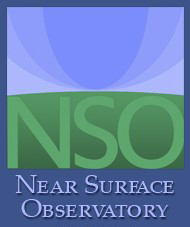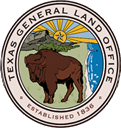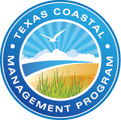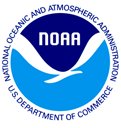The Texas Shoreline Change Project

Click here for the interactive map of Texas Gulf Shoreline Movement Rates through 2024
Introduction
Texas has a variety of shoreline types along its open Gulf of Mexico coast and coastal bays that are constantly shifting and mostly retreating landward. This retreat results in loss of public and private property and important natural habitats such as beaches, dunes, and marshes. To address this long-term problem, the Texas Legislature passed the Coastal Erosion Planning and Response Act in 1999. This act authorized the Texas General Land Office (GLO) to conduct a coastal-erosion response program. In support of the program, Bureau coastal researchers are identifying and studying eroding areas along the Gulf of Mexico and coastal bay shorelines of Texas, analyzing shoreline movement rates and causes, and creating a comprehensive, digital database of historical shoreline positions and average annual rates of shoreline movement that are made available to the public through the Internet. Funding is provided by the Texas General Land Office, the Texas Coastal Management Program, and the geologic hazards component of the Bureau's State of Texas Advanced Resource Recovery program.
Goal
The goal of the Texas Shoreline Change Project is to develop and maintain a modern shoreline-monitoring and change-analysis program that will help guide coastal-erosion and storm-hazard-mitigation projects along Texas’ Gulf and bay shorelines.
Approach
Developing a modern shoreline monitoring and analysis program at the Bureau has been accomplished by:
- Digitizing historical shorelines that were previously mapped at the Bureau and integrating them into a Geographic Information System (GIS) database of past and current shoreline positions,
- Rectifying and georeferencing historical photographs to extract past shoreline positions to supplement those determined during the initial historical shoreline movement studies,
- Periodically surveying topographic profiles across the beach and dune system at representative locations on the Texas Gulf shoreline through the Texas High School Coastal Monitoring Program,
- Establishing GNSS (Global Navigational Satellite System) reference points to support past, current, and future coastal airborne lidar surveying, and
- Conducting airborne topographic and bathymetric lidar surveys to acquire current and future shoreline data on shoreline position, beach morphology, and beach and dune volumetrics.
The Bureau operates a Chiroptera topographic and bathymetric lidar system and continually strives to improved coastal survey techniques. Since 2000, numerous airborne lidar surveys have been conducted on the Gulf beach and dune system to determine shoreline position and estimate beach and dune volume, including coast-wide surveys in 2000, 2010, 2011, 2012, 2019, and 2024 and full or partial coastal surveys after hurricanes Ike (2008), Harvey (2017) and Beryl (2024). Surveys have also been flown over the major bay systems of the middle Texas coast (Copano/Aransas, San Antonio, and Matagorda bay systems) and East and West bays of the Galveston Bay system.
Using data acquired from these methods, Bureau researchers monitor coastal shorelines by
- Computing long-term (1930s to present), intermediate-term (1950s to present), and recent (2000 to present) rates of shoreline movement,
- Calculating beach and dune volumetrics from airborne lidar survey data and examining recent spatial and temporal trends in sand storage,
- Analyzing shoreline movement and beach and dune volumetrics within the context of relative sea-level trends, tropical cyclone impact and recovery, shoreline type, and geologic setting,
- Quantifying land-loss rates along the entire Texas Gulf shoreline and along surveyed bay shorelines and relating those changes to shoreline type and geologic setting,
- Working with GLO coastal staff to identify “critical erosion areas”,
- Serving shoreline movement data to the public on interactive web-based map viewers, and
- Publishing comprehensive reports that discuss spatial and temporal trends in shoreline movement and beach and dune system volumetrics as well as general causes of change trends.



